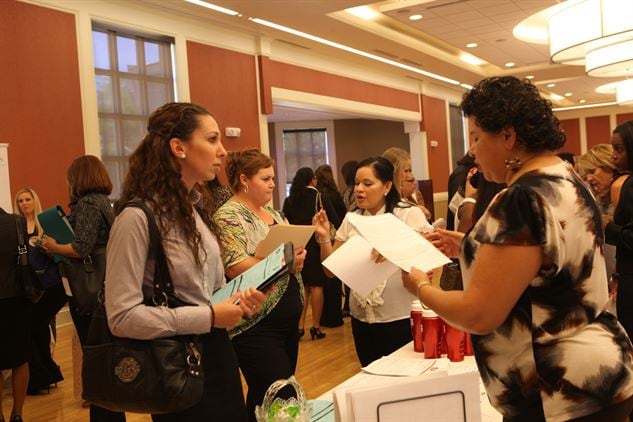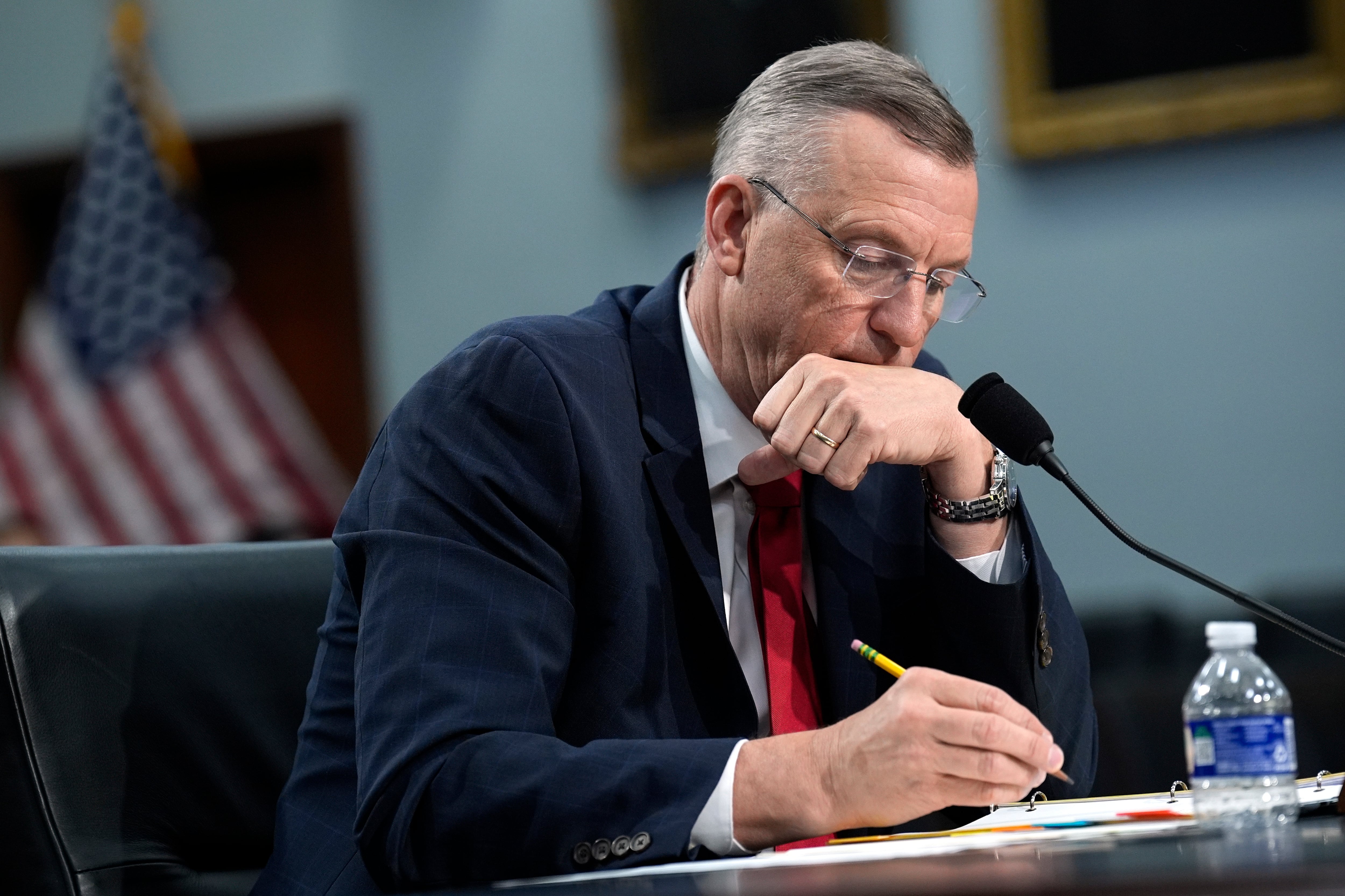[Editor’s Note: This story has been changed to reflect the for-profit status of the National Military Spouse Network and to include comments from DoD.]
Are military spouse employment programs really helping these spouses find jobs?
Despite huge expenditures on these efforts, more data about the effects the programs are having is needed, according to one group supporting the professional career and entrepreneurial goals of military spouses.
“Despite more than a decade of efforts, the military spouse unemployment rate stubbornly remains over 20% pre-pandemic,” said Sue Hoppin, founder and president of the National Military Spouse Network, during an event Jan. 19 announcing the release of the group’s fourth annual white paper on spouse employment. NMSN is a for-profit company.
“Many military families rely on two incomes to make ends meet. It’s challenging to find jobs through moves and other transitions,” she said.
Since there hasn’t been meaningful change in the spouse unemployment rate, there needs to be “a full baseline assessment,” according to the white paper. NMSN recommends that Defense Department set this up — a way to help everyone involved in the effort measure the effectiveness of their programs, which includes not only federal agencies but also states, local governments, nongovernmental organizations and industry, Hoppin said.
“The process should be transparent. There needs to be a reporting requirement and they should give everyone more visibility into the progress of their programs, much as they do through the DoD State Liaison Office,” Hoppin said. That office has set up ways to measure states’ progress on a number of quality-of-life issues, based on simple measures of that progress and milestones, she said.
The NMSN team noted that that “hundreds of millions of dollars” have been spent by Congress, the Defense Department, nonprofit organizations and employers on programs and initiatives related to military spouse employment.
Solutions for the military spouse dilemma will involve fine-tuning and adjusting programs to better meet the current needs of spouses, identifying gaps where programs are still needed, and getting rid of programs that don’t work, Hoppin said. “We cannot be afraid to do this. We must increase employment and provide business opportunities for the nation’s military spouses.”
“We still rely on anecdotal evidence that programs are working,” the white paper stated.
The call for better data is one of the network’s five recommendations: “Above all else, we continue to believe that we can’t fix what we don’t measure,” the NMSN paper states.
“If we ever hope to make significant and lasting change for military spouses on the issue of employment, we need to reinvigorate the same community effort that successfully turned the tide for veteran employment a decade ago,” the NMSN team stated. Other advocates have pushed for tracking unemployment statistics for military spouses similar to the tracking of veteran unemployment. Different organizations have stated various numbers for spouse unemployment over the years, using various methodologies.
NMSN researched 11 different spouse employment programs administered by DoD and other federal agencies and found that, of those, eight have no publicly available performance metrics, and three have limited information available.
For example, a DoD initiative, the Military Spouse Employment Partnership, had resulted in 544 partner employers hiring more than 200,000 military spouses in the past 10 years. While “this is no small feat,” the paper states, “if we are going to move the needle on military spouse employment and retention, we will need the full participation and support of all partner employers, including the federal government.”
That also means more specific data to understand whether spouses were able to find employment consistent with their education and skills, and if they were able to retain their employment with that MSEP partner through permanent change of station moves. “We can’t fully celebrate employment wins without data,” NMSN noted.
Defense officials, however, responded that the DoD does track spouses’ usage and satisfaction of their programs.
“Through the Defense Department’s Spouse Education and Career Opportunities Program, including the Military Spouse Employment Partnership, the My Career Advance Account Scholarship, and the SECO Career Counseling Center, the department uses several instruments to track program utilization and satisfaction,” stated DoD spokeswoman Lisa Lawrence, in a response to Military Times. “This includes daily metrics and large studies, such as the Active Duty Spouse Survey that includes questions on MyCAA usage and barriers to education and employment,” she said.
Recently, DoD started two pilot programs to help military spouses increase their professional knowledge and access to remote work opportunities, Lawrence said. Spouses have access, at no cost, to Udemy, an online education platform. More than 3,000 spouses have requested access since the pilot began in June, 2021. Another initiative , providing access to FlexJobs, an online platform providing vetted, remote job openings across the U.S., has seen more than 1,100 spouse request the access.
“The department is tracking usage and outcome data in these pilots to determine whether they should continue, and to inform future pilots aimed at bolstering military spouse employment,” Lawrence said.
In one program designed to increase the number of spouses hired by executive branch agencies through noncompetitive appointments, less than 1% of federal new hires were military spouses from fiscal 2011 through 2018, the NMSN report noted. The hiring authority was Executive Order 13473, signed in 2008.
RELATED

NMSN says questions should be asked about military spouses’ awareness of these programs; eligibility and ease of access; how many successfully used the program; how many tried to use it but were unsuccessful; how many spouses were employed because of the program; how many were able to continue their employment through a PCS move because of the program, initiative, or hiring authority.
Other recommendations include:
♦ Congress should study the inability of military spouses to benefit from employers’ traditional retirement savings account benefits, such as the 401(k). Among other things, the assessment should consider the vesting timeline requirements, “and the lost opportunity to accumulate retirement savings at the same rate of civilian peers unaffiliated with the military,” because of the shorter length of time military spouses may be working for an employer before the next PCS move.
♦ Military spouses should be added to the Small Business Administration’s list of small-business concern classifications, to provide them with more support such as training and financial resources. Currently, those small-business concerns are identified as veteran-owned, women-owned, Native American-owned, LBGTQ+-owned, minority-owned and rural. Military spouses have the additional challenge of moving their business each time they move with their service member.
♦ Federal departments and agencies should expand the use of the State Department’s Domestic Employees Teleworking Overseas program. This could ensure that military spouses, as well as other trailing federal spouses, who are employed with the federal government are able to maintain their employment during assignments overseas. These agreements are currently in use all over the world, Hoppin said.
♦ Congress should authorize the development of a “military spouse experience map through the lens of employment,” providing information about what employments and resources are available during each phase of the military life cycle. As NMSN noted, DoD’s MyStep Military Spouse Transition Program, is a guide to military life from the beginning of military service through the transition to civilian life. But, like other Military OneSource programs, eligibility for this program ends one year after military service ends.
NMSN has been advocating for military spouses since 2010, when Hoppin started the company, following her own unemployment struggles moving with her Air Force husband.
A previous NMSN recommendation to conduct a study on military spouse employment was included in the 2022 National Defense Authorization Act.
During the NMSN event, two senior spouses talked about the growth in military family programs they’ve seen over the past three decades. Sharene Brown, wife of the Gen. CQ Brown Jr., chief of staff of the Air Force, noted the numerous programs supporting service members and families from cradle to grave, adding that she’s not sure corporate employers would have such extensive programs available for their employees and families.
Mollie Raymond, wife of Space Force Gen. John “Jay” Raymond, the chief of space operations, described her employment struggles, especially when she was first married and they moved to California shortly afterwards. “I have a masters in business administration. I couldn’t find a job. I couldn’t find a network to connect with, and no resources.
“I have seen in 34 years so many more wonderful resources available to spouses.” The programs are too numerous to name, she said, but she mentioned DoD’s Military Spouse Education and Career Opportunities program, and the Military Spouse Employment Partnership as two examples.
She also highlighted ongoing efforts at the local level, citing the Military Spouse Career Coalition in Colorado Springs, whose members including local community leaders and representatives, including spouses, from the military community. “Everyone came together to help spouses in pursuit of employment,” she said, describing her experience while living there.
“Spouses also helped them to learn about the challenges of moving in the military,” she said, adding that coalition members are advocates to inform employers about the value of military spouses as employees.
Karen has covered military families, quality of life and consumer issues for Military Times for more than 30 years, and is co-author of a chapter on media coverage of military families in the book "A Battle Plan for Supporting Military Families." She previously worked for newspapers in Guam, Norfolk, Jacksonville, Fla., and Athens, Ga.





